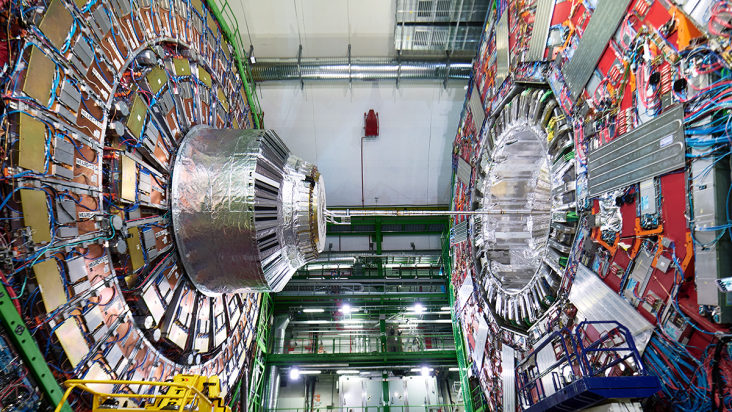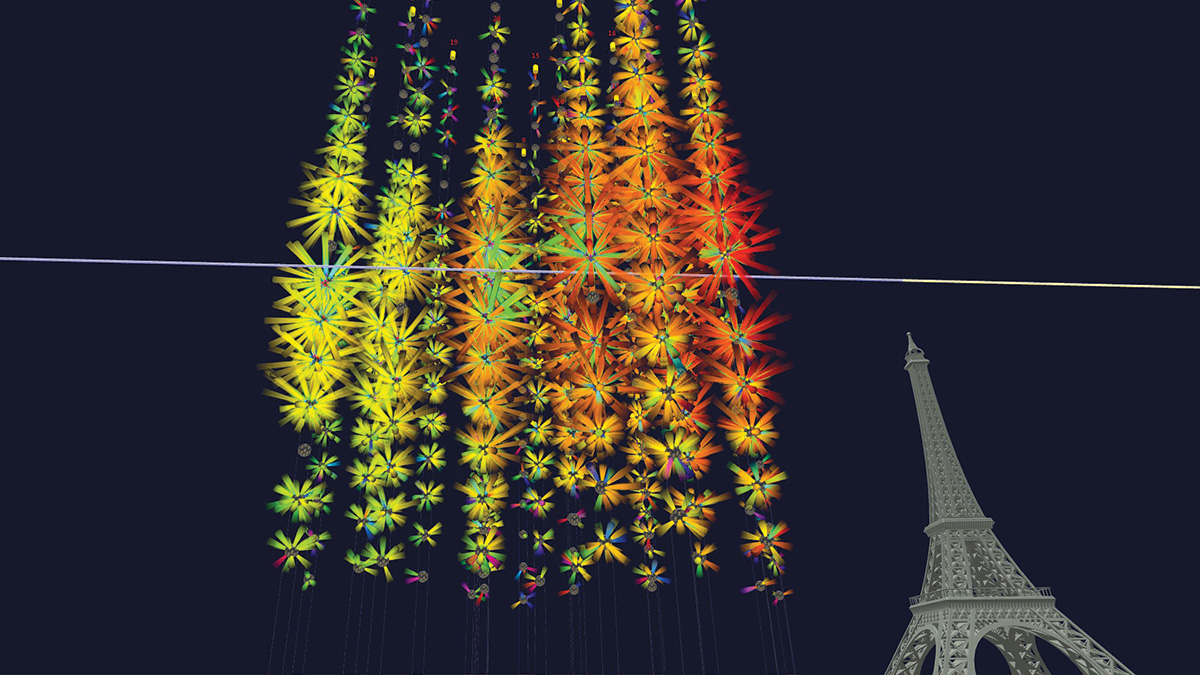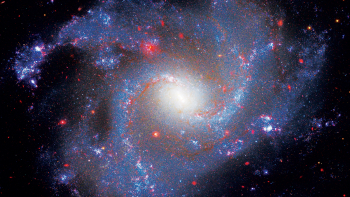 Read article 'CMS observes top–antitop excess'
Read article 'CMS observes top–antitop excess'
 Read article 'CMS observes top–antitop excess'
Read article 'CMS observes top–antitop excess'
 Read article 'The Hubble tension'
Read article 'The Hubble tension'
Vivian Poulin asks if the tension between a direct measurement of the Hubble constant and constraints from the early universe could be resolved by new physics.
 Read article 'Cosmogenic candidate lights up KM3NeT'
Read article 'Cosmogenic candidate lights up KM3NeT'
Strings of photodetectors anchored to the seabed off the coast of Sicily have detected the most energetic neutrino ever observed, smashing previous records.
Ongoing cross-checks at the Tevatron experiment reinforce its 2022 measurement of the mass of the W boson, which stands seven standard deviations above the Standard Model predictio...
New results from the CHIME telescope support the hypothesis that fast radio bursts originate in close proximity to the turbulent magnetosphere of a central engine.
With a new measurement imminent, the Courier explores the experimental results and theoretical calculations used to predict ‘muon g-2’ – one of particle physics’ mos...
The NA61/SHINE collaboration have observed a strikingly large imbalance between charged and neutral kaons in argon–scandium collisions.
The secretary of the 2026 European strategy update, Karl Jakobs, talks about the strong community involvement needed to reach a consensus for the future of our field.
 Read about 'CERN Courier magazine: get the latest issue'
Read about 'CERN Courier magazine: get the latest issue'
Browse the editor’s picks by downloading a PDF of the most recent issue of CERN Courier
 Read about 'In focus: enabling technologies'
Read about 'In focus: enabling technologies'
The platform technologies that underpin Europe’s large-scale research facilities
 Read article 'An international year like no other'
Read article 'An international year like no other'
The International Year of Quantum inaugural event was organised at UNESCO Headquarters in Paris in February 2025.
 Read article 'Educational accelerator open to the public'
Read article 'Educational accelerator open to the public'
What better way to communicate accelerator physics to the public than using a functioning particle accelerator?
 Read article 'Game on for physicists'
Read article 'Game on for physicists'
Raphael Granier de Cassagnac discusses opportunities for particle physicists in the gaming industry.
 Read article 'The beauty of falling'
Read article 'The beauty of falling'
Kurt Hinterbichler reviews Claudia de Rham's first-hand and personal glimpse into the life of a theoretical physicist and the process of discovery.
 Read article 'CMS peers inside heavy-quark jets'
Read article 'CMS peers inside heavy-quark jets'
The CMS collaboration has shed light on the role of the quark mass in parton showers.
 Read article 'Salam’s dream visits the Himalayas'
Read article 'Salam’s dream visits the Himalayas'
The BCVSPIN programme aims to facilitate interactions between researchers from Bangladesh, China, Vietnam, Sri Lanka, Pakistan, India and Nepal and the broader international commun...
 Read article 'Charm jets lose less energy'
Read article 'Charm jets lose less energy'
New results from the ALICE collaboration highlight the quark-mass and colour-charge dependence of energy loss in the quark-gluon plasma.
 Read article 'Space oddities'
Read article 'Space oddities'
In his new popular book, Harry Cliff tackles the thorny subject of anomalies in fundamental science.
 Read article 'Encounters with artists'
Read article 'Encounters with artists'
Over the past 10 years, Mónica Bello facilitated hundreds of encounters between artists and scientists as curator of the Arts at CERN programme.
 Read article 'Breaking new ground in flavour universality'
Read article 'Breaking new ground in flavour universality'
A new result from the LHCb collaboration further tightens constraints on the lepton-flavour-universality violation in rare B decays.
 Read article 'A new record for precision on B-meson lifetimes'
Read article 'A new record for precision on B-meson lifetimes'
As direct searches for physics beyond the Standard Model continue to push frontiers at the LHC, the b-hadron physics sector remains a crucial source of insight for testing establis...
 Read article 'Beyond Bohr and Einstein'
Read article 'Beyond Bohr and Einstein'
Jim Al-Khalili reviews Quantum Drama, a new book by physicist and science writer Jim Baggott and the late historian of science John L Heilbron.